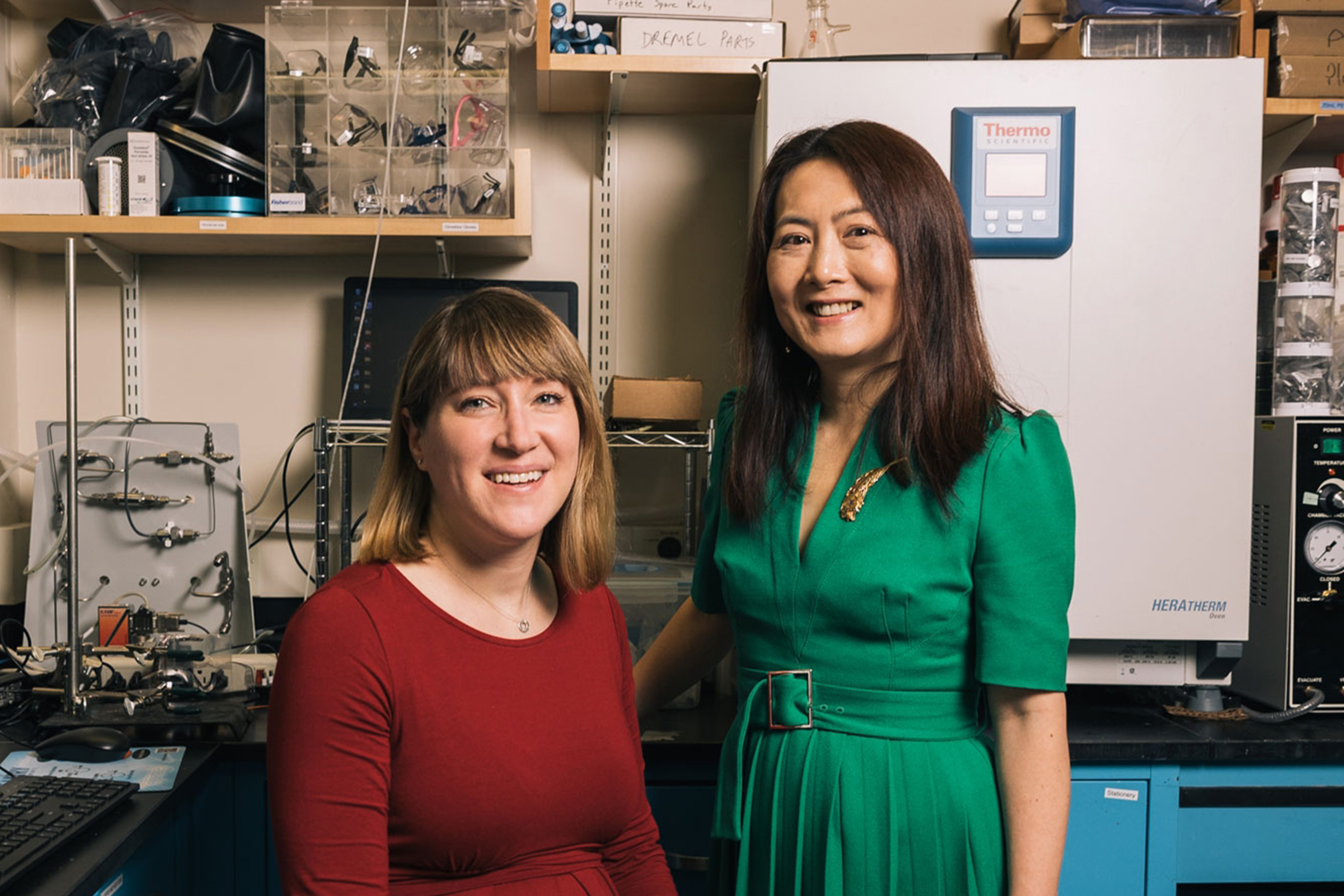Mentoring Powers MIT Battery Research
-
-
MIT Spectrum
Filed Under
Recommended

In fall 2005, MIT sophomore Betar Gallant ’08, SM ’10, PhD ’13 was finishing a lab for an introductory class on engineering materials when the instructor, Yang Shao-Horn, struck up a conversation with her about battery materials.
Listening to Shao-Horn, now the JR East Professor of Engineering in the departments of mechanical engineering and materials science and engineering, talk about how specific arrangement of atoms dictates a material’s behavior, Gallant started to appreciate how molecular elements might be arranged to create new material properties. “It was really interesting, and I knew I wanted to learn more,” she recalls.
Gallant had developed a love of physics and an interest in electric vehicles growing up in Natick, Massachusetts, where she performed makeshift experiments in the basement with her dad, a polymath with diverse interests in English, music, engineering, and physics. Her father died after a long illness when Gallant was 16. While grieving, and when she was “missing him the most,” Gallant pored over the textbooks that had captivated him. She wanted to explore, as he had, a career in engineering.
But as a first-year student at MIT, Gallant felt intimidated. Everyone else seemed to know their path forward. “I didn’t have a crystallized view of the one thing I wanted to do,” she recalls.
Enter Yang Shao-Horn, whose research explores what occurs at a molecular level as charges transfer with the help of catalysts within electrochemical power sources such as batteries and fuel cells. Her work has led to promising materials for energy storage and conversion, helping engineers design lighter, more energy-dense, efficient, and sustainable versions of the lithium-ion batteries used in electric vehicles.
In 2005, Gallant joined Shao-Horn’s research group through the MIT Undergraduate Research Opportunities Program. She credits Shao-Horn’s personal attention and approachability with giving her the confidence to ask to be a part of the lab.
The best mentorship is not about the technicalities of how to progress along some known path but about seeing and cultivating the unique strengths and intellectual potential of another person.
“That single conversation made me think, ‘This is an opportunity to engage and see if I can get involved in research or learn more,’” Gallant says.
For the rest of Gallant’s undergraduate years and then as an MIT graduate student, she worked in Shao-Horn’s lab alongside materials scientists, mechanical engineers, and chemical engineers with a common goal: designing new materials for energy storage and delivery devices. Shao-Horn, according to Gallant, “has a remarkable ability to say, ‘Let’s hunker down, figure out what we understand, where we need to keep working, and where we’d like to go. We’ll find our way through it.’ And we always did. That attitude really shaped how I think about perseverance and what’s possible.”
After earning three degrees at MIT and completing a postdoctoral fellowship at the California Institute of Technology, Gallant joined the Institute’s faculty in 2016. Now the Class of 1922 Career Development Professor and associate professor of mechanical engineering, she continues groundbreaking research on advanced battery chemistries. Her group focuses on the electrochemical reactions needed to improve battery technologies, such as those based on lithium metal anodes and advanced cathode chemistries for a range of applications.
“We’re also looking at chemistries beyond the classical lithium-ion footprint, like calcium-based batteries and other lithium alternatives,” Gallant explains. “These are not likely to replace lithium-ion batteries, but they could provide functionality in important applications where we don’t need the performance of lithium.”
Shao-Horn is still her mentor, according to Gallant. “I didn’t know anybody in academia growing up. Yang taught me, beyond the specifics of research, what it is to be a professor and an academic,” Gallant says. “She lights up when having an intellectually probing discussion with her students, reviewing and thinking through the data with them. That’s something I’ve taken forward with me in my own faculty career.”
Both women appreciate the paths forged at MIT by women who preceded them. “We still have a long way to go, but we are making steady progress,” says Shao-Horn. Mary Boyce SM ’84, PhD ’87, the Institute’s first tenured female mechanical engineering professor, mentored Shao-Horn and served on Gallant’s PhD thesis committee.
“The best mentorship is not about the technicalities of how to progress along some known path but about seeing and cultivating the unique strengths and intellectual potential of another person,” says Gallant. “Yang’s mentorship helped me learn to express my own ideas and find my own way by encouraging not what, but how to think.”
This story was originally published in the fall 2023 issue of MIT Spectrum.
Photo: Jake Belcher







